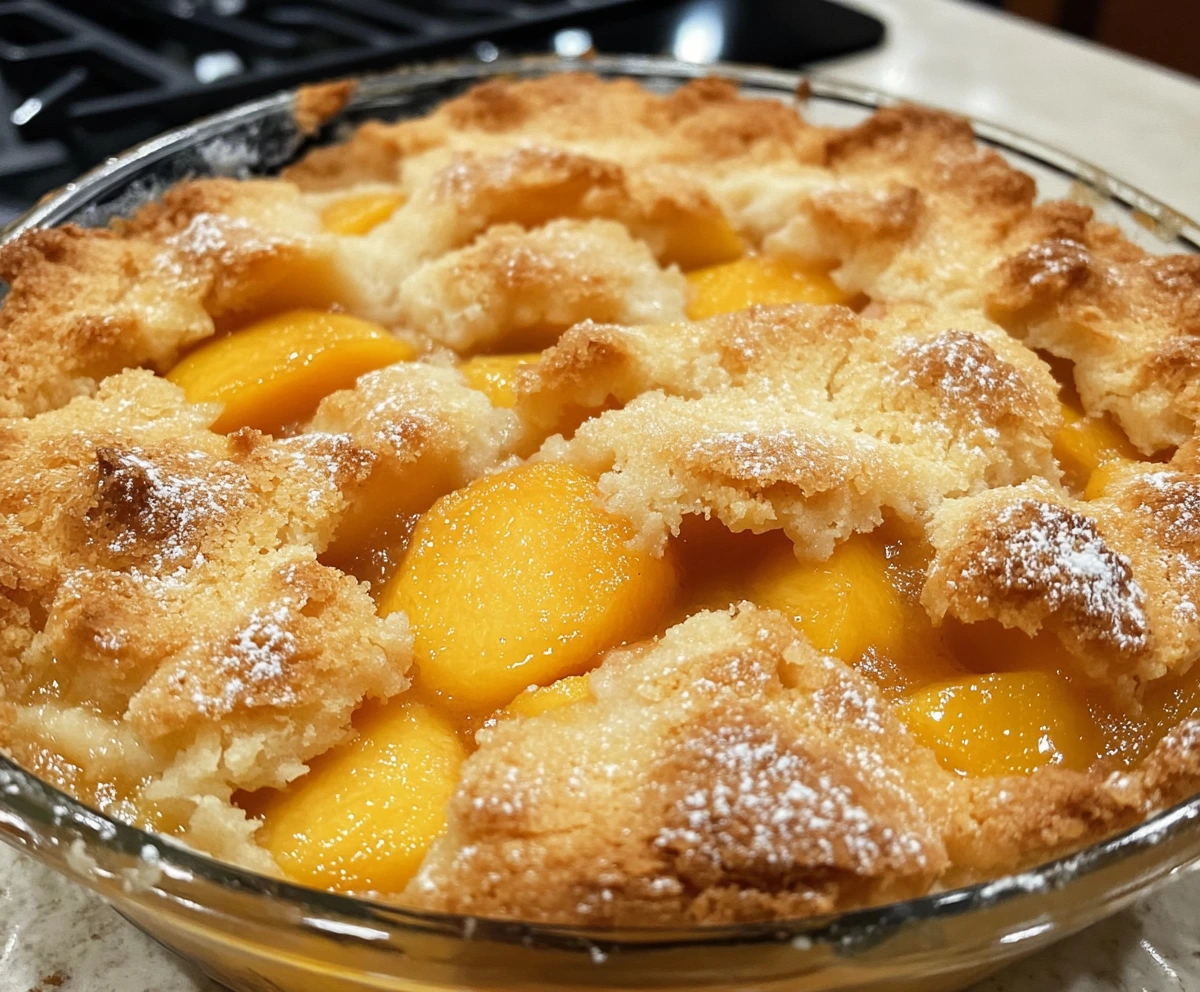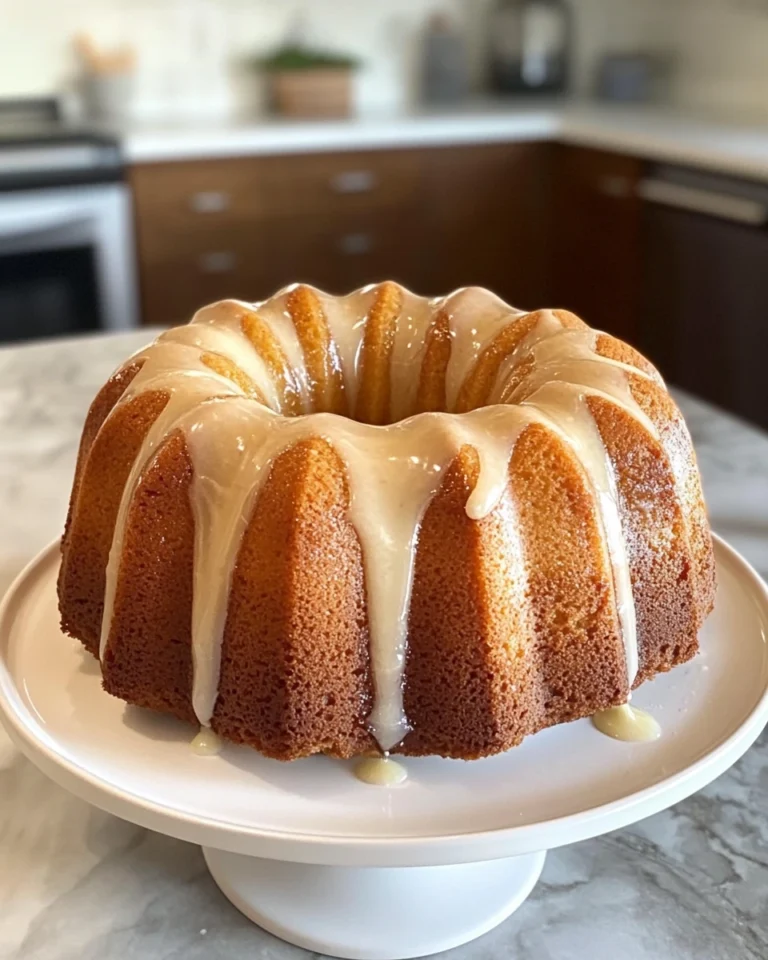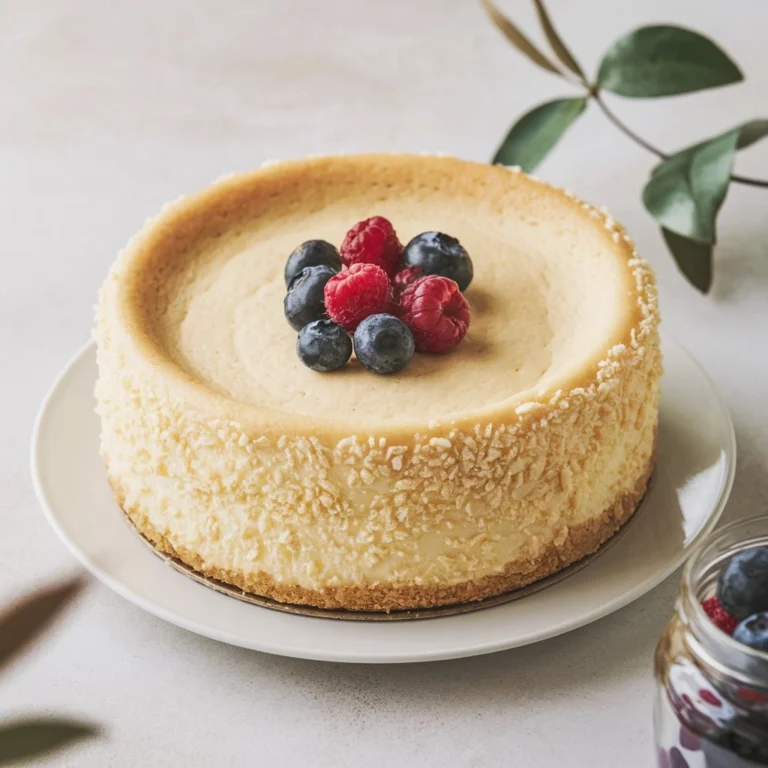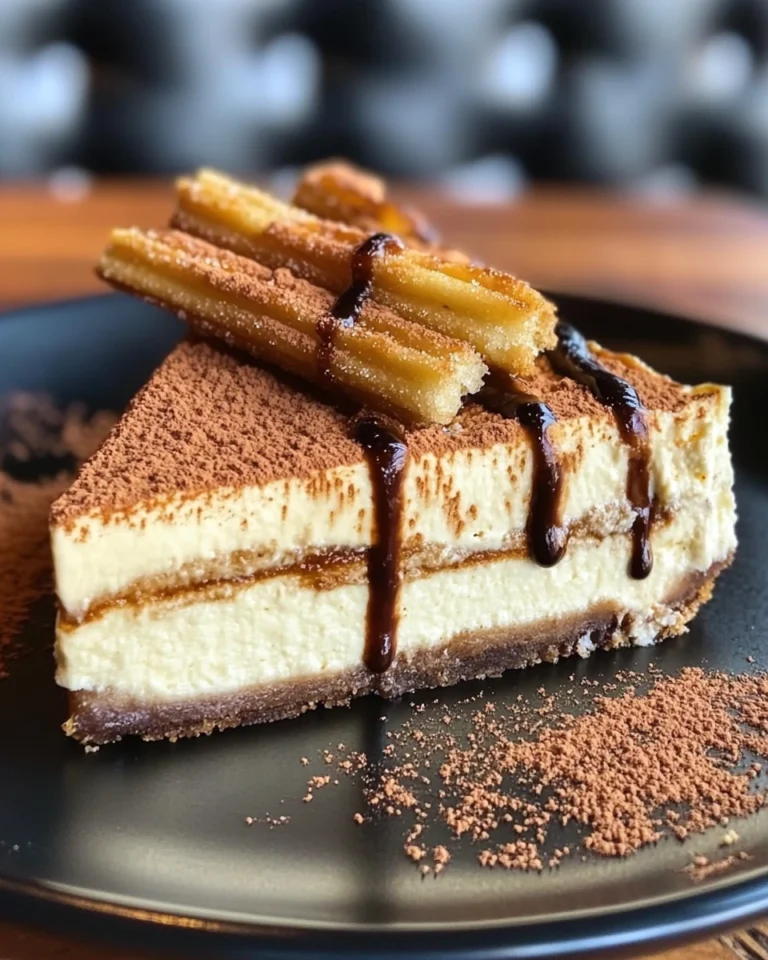Why Did My Cobbler Turn Out Like Cake?
There’s nothing more disappointing than baking a cobbler only to discover that it turned out more like a cake. The rustic, juicy fruit filling and biscuit-like topping of a cobbler should be comforting and textured. When it becomes fluffy and airy, much like a sponge cake, the dessert loses its unique charm.
But why does this happen? The reasons are often rooted in the ingredients and techniques used during baking. This article delves into the common causes of a cake-like cobbler and provides actionable tips to ensure your cobbler turns out perfectly every time.
What is Cobbler, and How Does It Differ from Cake?
Understanding Cobbler’s Structure
A cobbler is a classic fruit dessert with a syrupy fruit base topped by either a biscuit dough or cake batter. The essence of a good cobbler lies in the contrast between the juicy fruit and the biscuit-like topping—a topping that should ideally be crisp and slightly chewy on the outside while tender on the inside.
In contrast, a cake is typically light, fluffy, and airy due to the leavening agents used, such as baking powder or baking soda. Cakes rise evenly, with a soft crumb, and their texture is uniform throughout. The difference between cobbler and cake isn’t just in the ingredients; it’s in how they’re mixed, baked, and ultimately how they feel when eaten.
In a traditional biscuit-style cobbler, the topping is either dropped by spoonfuls over the fruit or spread unevenly. This irregularity gives it a rustic look, but when things go wrong, and it turns out like a cake, you’ll notice a smooth, even rise with a spongy texture.
The Role of Leavening in Cakes and Cobblers
Leavening agents like baking powder and baking soda play a significant role in baking cakes, helping them rise and become light and fluffy. In a cobbler, too much leavening can be detrimental. If you’re adding leavening agents in excess, the topping will rise too much, turning your cobbler into something closer to a cake. It’s essential to maintain the right balance between flour, fat, and liquid to achieve a cobbler’s signature texture.
Common Causes of a Cake-Like Cobbler
1. Using Too Much Flour
One of the most frequent causes of a cobbler turning into a cake is using too much flour in the topping. Flour gives structure to baked goods, and while it’s necessary to form the cobbler topping, too much flour will make the topping dense and more like cake.
- How Flour Affects Cobbler Texture: The flour forms gluten when combined with liquid, giving structure to the batter or dough. In cakes, gluten development is necessary for structure and softness. But in a cobbler, too much gluten will make the topping firm and cake-like rather than tender and crisp.
- How to Avoid This: Measure your flour carefully and follow the recipe ratios precisely. The tendency to add more flour comes from a desire to make the dough sturdier, but this is counterproductive in a cobbler. Stick to all-purpose flour, which has the right balance of gluten-forming potential for most cobbler recipes.
- Consider Different Flours: If you’re experimenting with flours like cake flour (which has a lower protein content), it may create a softer topping, resembling cake. For a heartier topping, all-purpose flour is the best choice, while whole wheat flour can give a more rustic texture, but be cautious with how much you use.
You can explore more on how different flours affect texture by checking this guide on peach cobbler with cake mix.
2. Overuse of Leavening Agents
Leavening agents like baking powder and baking soda help baked goods rise. In a cake, they produce a light, fluffy texture by releasing gas bubbles that cause the batter to expand. However, in a cobbler, too much leavening will cause the topping to rise excessively, turning it into a sponge-like consistency.
- How Leavening Agents Work: When combined with moisture and heat, leavening agents release carbon dioxide, which causes the batter or dough to rise. While this is desirable in cakes, cobblers need just a little rise to achieve a tender, crisp topping. Too much leavening will cause the cobbler to puff up like a cake.
- How to Avoid This: Measure baking powder and baking soda carefully. It’s easy to think that a little extra will help the cobbler rise better, but in reality, it can ruin the texture. If your cobbler frequently turns out too fluffy, try reducing the amount of leavening by 25%.
- Adjustments Based on Altitude: If you’re baking at a high altitude, you may need to adjust the amount of leavening agent even more. High altitudes cause baked goods to rise faster, so reduce the baking powder or soda by about ¼ teaspoon for every cup of flour.
You can read more about how to balance leavening agents with other ingredients in this coffee cupcake recipe guide.
3. Overmixing the Batter
Overmixing is another common mistake that can lead to a cake-like cobbler. When you overmix, you activate the gluten in the flour, which makes the topping smooth and uniform—exactly what you want to avoid.
- How Mixing Affects Texture: When flour and liquid are combined, gluten begins to develop. The more you mix, the more gluten forms, creating a stretchy network. This is ideal for breads and cakes but can lead to a chewy, dense texture in a cobbler.
- How to Avoid Overmixing: When making the topping for a cobbler, stir the ingredients just until they are combined. The batter should be slightly lumpy and uneven—this is what gives the cobbler its rustic appearance. Use a spoon or spatula to mix the ingredients, and stop as soon as the flour is incorporated.
- The Right Tools for Mixing: Avoid using an electric mixer, which can easily overwork the dough. Instead, use your hands or a wooden spoon to gently fold the ingredients together. You want to see small lumps of flour in the batter—these will bake into a crisp, textured topping.
4. Too Much Liquid in the Topping
Another cause of a cake-like cobbler is adding too much liquid to the batter. If the batter is too thin, it will spread too much during baking, resulting in a soft, cake-like texture.
- How Liquid Affects the Cobbler: The liquid in a cobbler batter hydrates the flour, but too much will make the batter runny, which causes it to spread out too much and bake into a soft layer rather than a crisp topping.
- How to Avoid This: Keep the batter thick and sticky, not runny. If the recipe calls for milk, cream, or water, measure carefully. If your batter feels too thin, you can add a bit more flour to thicken it.
- Check Consistency: The consistency of the batter should resemble pancake batter—thick but spreadable. If it’s runny like cake batter, it will not bake correctly.
5. Not Enough Fruit in the Filling
The balance between the fruit filling and the topping is critical in a cobbler. If there isn’t enough fruit in the filling, the topping can dry out and resemble cake rather than the traditional cobbler texture.
- Why the Fruit-to-Topping Ratio Matters: The juices from the fruit are essential for keeping the topping moist as it bakes. If there’s not enough fruit, the topping can become dry and cake-like.
- How to Fix This: Use plenty of fruit in your cobbler—generally, you want about twice as much fruit as topping. This ensures that the fruit juices can moisten the topping during baking, preventing it from becoming too dry or cakey.
6. Baking Temperature and Time
Sometimes the issue isn’t with the ingredients or the mixing but with how the cobbler is baked. Baking temperature and time play a crucial role in achieving the perfect texture.
- How Temperature Affects Cobbler Texture: If the oven temperature is too low, the topping may bake too slowly, becoming dense and cake-like rather than crisp. On the other hand, if the oven is too hot, the topping may brown too quickly without fully setting, leading to a soggy texture underneath.
- How to Avoid This: Bake your cobbler at a moderate temperature, around 375°F (190°C). This allows the topping to crisp up while the fruit filling bubbles underneath. Avoid opening the oven door frequently, as this can cause fluctuations in temperature.
- Check for Doneness: A good cobbler should have a golden-brown topping and bubbling fruit juices around the edges. If the topping is still pale and the fruit isn’t bubbling, it’s not done yet.
How to Fix a Cakey Cobbler
1. Check Your Ingredients
If your cobbler turned out like a cake, the first thing you should do is review the ingredients you used. Were you using cake flour or self-rising flour? Did you accidentally add too much baking powder or baking soda? These small mistakes can have a big impact on the final texture.
- Pro Tip: If you’re using self-rising flour, it already contains leavening agents, so avoid adding extra baking powder or soda. For a sturdier texture, stick to all-purpose flour and adjust the leavening agents accordingly.
2. Assess the Batter Consistency
The texture of the batter is crucial to achieving the perfect cobbler. If the batter is too thin, it will spread out during baking, creating a soft, cake-like texture.
- Pro Tip: Aim for a batter that is thick and slightly sticky. If it’s too runny, add a small amount of flour until it reaches the right consistency. The batter should hold its shape when dropped by spoonfuls over the fruit.
3. Troubleshoot Oven Temperature
If you’ve followed the recipe and the cobbler still turns out cakey, check your oven temperature. An oven thermometer can help you ensure your oven is properly calibrated.
How to Avoid a Cakey Cobbler in the Future
1. Reduce Leavening Agents
If your cobbler consistently turns out fluffy and cake-like, try reducing the amount of baking powder or baking soda. These agents cause the batter to rise, and too much will result in a cake-like topping.
- Pro Tip: For high-altitude bakers, reduce the leavening agent by a quarter teaspoon for every cup of flour.
2. Don’t Overmix
Mixing activates the gluten in the flour, and too much mixing will lead to a smooth batter and a cake-like texture. Stir the ingredients just until combined, and don’t worry if the batter looks a little lumpy—those lumps are key to the rustic texture of a traditional cobbler.
- Pro Tip: Consider hand-mixing your batter with a spoon rather than an electric mixer. This gives you better control and reduces the risk of overmixing.
3. Use Plenty of Fruit
Don’t skimp on the fruit. Cobbler should be fruit-heavy, with the topping serving as an accent rather than the star of the show. A ratio of two parts fruit to one part topping is a good rule of thumb to follow.
Exploring Cobbler Variations
Not all cobblers are created equal. There are several regional and stylistic variations of cobblers, each with its own unique texture and preparation method. Understanding these variations can help you better understand what went wrong with your cobbler and how to adjust it to suit your tastes.
1. Biscuit-Style Cobbler
This is the most traditional form of cobbler, where a biscuit-like dough is dolloped over the fruit filling. The dough becomes crisp on the outside and tender on the inside, creating a rustic texture.
- Best for: Those who prefer a hearty, textured topping that contrasts with the juicy fruit.
2. Southern-Style Cobbler
This variation uses a batter that spreads over the fruit and rises as it bakes, creating a cakier texture. If you prefer a fluffy topping, this style may be more your speed. However, if you’re aiming for the traditional rustic texture, this isn’t the version you want.
- Best for: People who enjoy a more cake-like dessert.
3. Crumble and Crisp Toppings
Crumble or crisp toppings are similar to cobblers but are made with a mixture of flour, butter, and sugar, often with oats or nuts added for texture. These desserts have a crispy, crunchy topping that contrasts with the soft fruit filling.
FAQs About Cobbler Texture
Why did my cobbler rise too much?
Your cobbler may have too much baking powder or baking soda. These leavening agents cause the topping to rise, creating a cake-like texture if used in excess.
Why is my cobbler too dry?
If your cobbler is dry, you likely didn’t use enough fruit or liquid in the filling. Cobbler relies on the juices from the fruit to moisten the topping.
Can I use cake mix for cobbler?
Yes, using cake mix will result in a softer, more cake-like topping. If you prefer a traditional cobbler texture, avoid using cake mix and opt for a biscuit-style topping instead.
What is the ideal fruit-to-topping ratio for cobbler?
A good rule of thumb is two parts fruit to one part topping. This ensures the topping doesn’t overwhelm the dish and that the cobbler remains moist.
Conclusion: Mastering the Perfect Cobbler
Achieving the perfect cobbler comes down to understanding your ingredients, adjusting your techniques, and avoiding common pitfalls like too much flour or overmixing. By following the tips in this guide, you’ll be able to create a juicy, rustic cobbler with a biscuit-like topping that perfectly complements the fruit filling.







